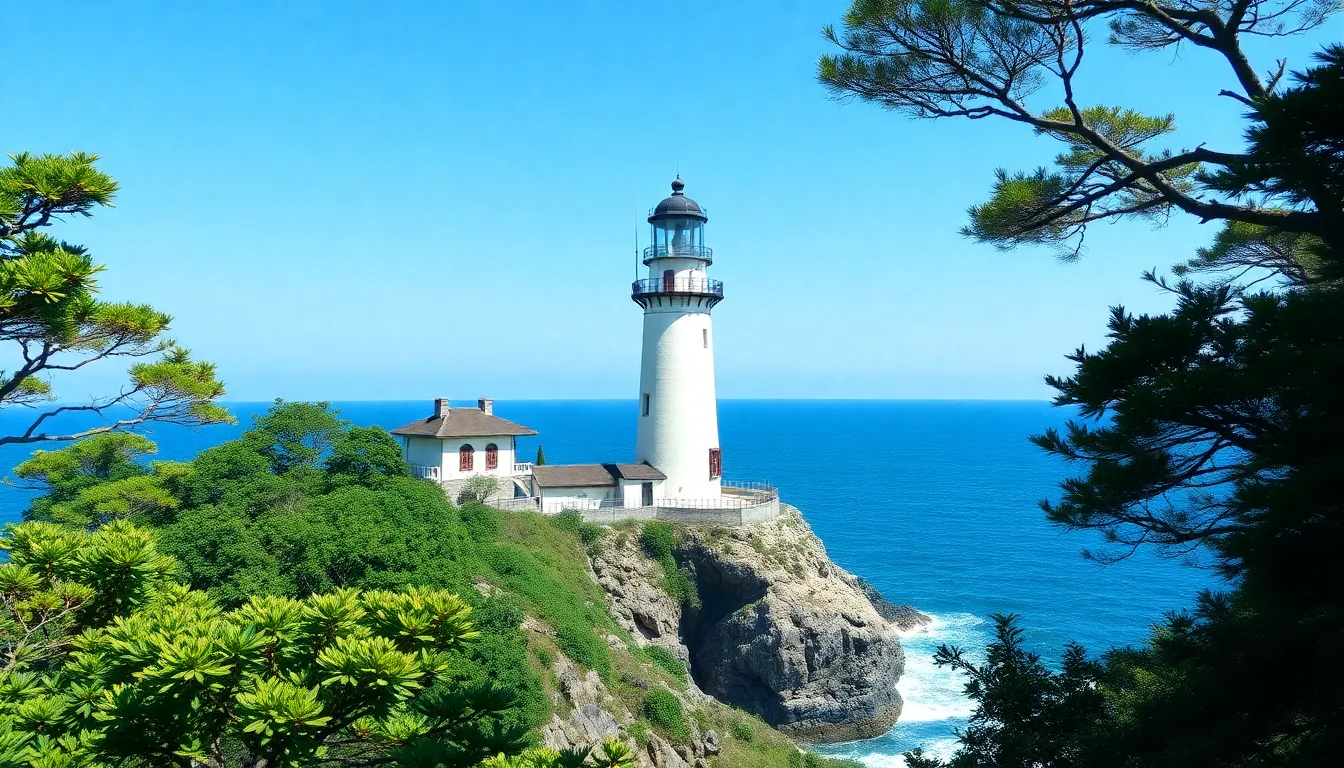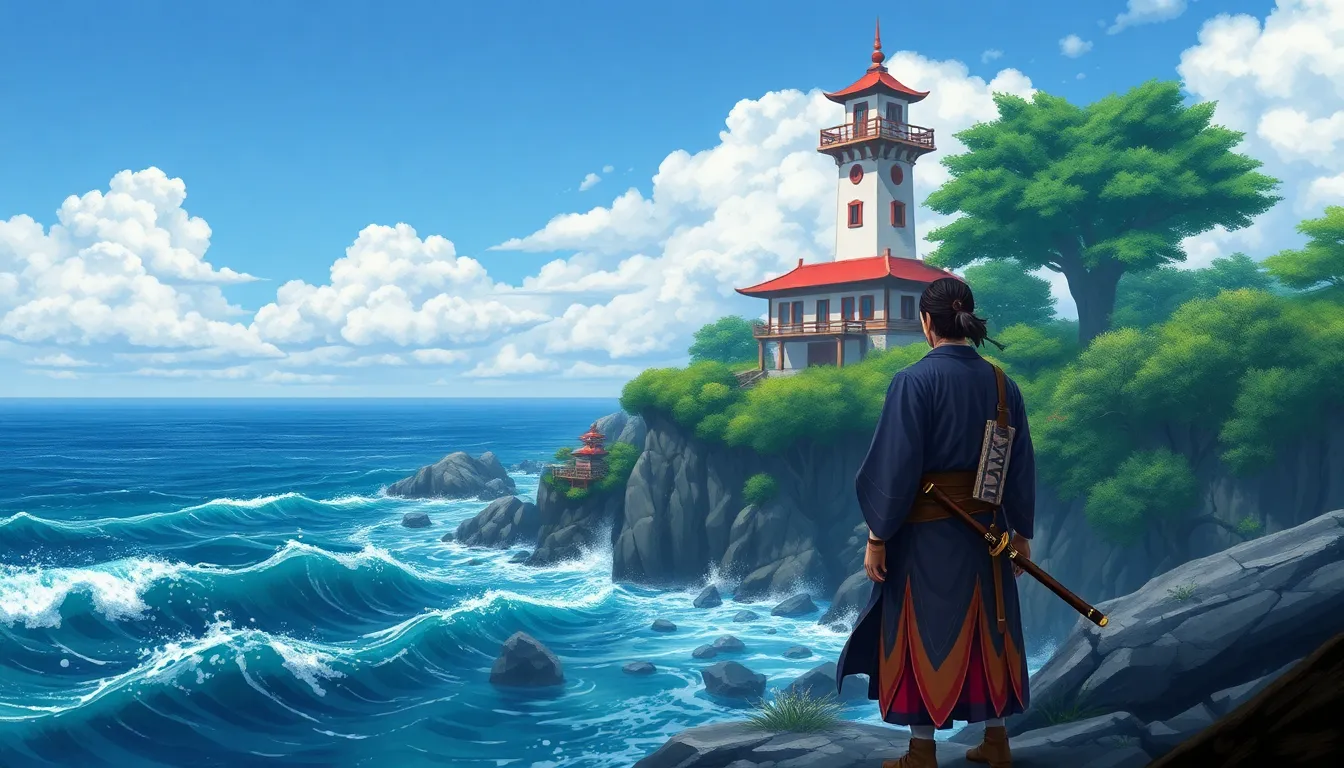In the breathtaking world of Ghost of Tsushima, players aren’t just battling Mongol invaders; they’re also uncovering the secrets hidden in the island’s stunning lighthouses. These towering beacons aren’t just for show—they’re gateways to adventure, history, and maybe even a few ghostly encounters. Who wouldn’t want to climb a lighthouse and channel their inner samurai while enjoying a view that’s more Instagram-worthy than your last vacation?
Table of Contents
ToggleOverview of Ghost of Tsushima Lighthouses
Ghost of Tsushima features several stunning lighthouses scattered across Tsushima Island. Each lighthouse acts as a unique landmark, showcasing ancient architecture and serving critical gameplay functions. Players encounter these structures while exploring the game’s open world, with each lighthouse providing not just a scenic view but also a sense of adventure and discovery.
Lighthouses enhance the immersive experience, often located on cliffs overlooking the sea. Players can spot them from a distance, enticing them to explore their surroundings. Interacting with a lighthouse might reveal new exploration challenges or hidden treasures, elevating the gameplay experience.
The historical significance of these lighthouses aligns with the game’s lore, reflecting Japan’s culture and maritime history. Players may stumble upon tales of the past while engaging with various lighthouse locations. Each lighthouse embodies the spirit of hope and guidance, resonating with the game’s themes of resilience against adversity.
Strategically positioned throughout the map, lighthouses assist in navigation. Discovering a new lighthouse can unveil part of the map, allowing players to uncover more content and quests. This aspect emphasizes the importance of exploration in Ghost of Tsushima, encouraging players to fully immerse themselves in the rich environment.
Players appreciate the breathtaking views often found at lighthouse locations. Each sunset or sunrise viewed from these cliffs offers a tranquil moment amidst the game’s action. Thus, lighthouses play a vital role in Ghost of Tsushima, blending gameplay, historical context, and stunning visuals into a cohesive experience.
Historical Significance


Lighthouses in Ghost of Tsushima hold considerable historical significance, reflecting Japan’s rich maritime heritage. These structures in the game serve as markers of navigation and safety, symbolizing hope amidst the turmoil of invasion.
Role of Lighthouses in the Game
Lighthouses enhance gameplay by revealing new areas of the map. Players encounter these structures while exploring, prompting them to uncover hidden treasures. Each lighthouse showcases unique architecture that links to the cultural narrative of Tsushima. These landmarks provide breathtaking views, enriching the player’s experience with stunning visuals. Players often find themselves drawn to these sites for both exploration and a sense of achievement.
Real-World Inspiration
The lighthouses in Ghost of Tsushima draw inspiration from actual historical sites across Japan. Real-life structures influenced their design, showcasing traditional Japanese architecture. Each lighthouse reflects the period’s maritime technology and serves as a reminder of Japan’s coastal resilience. These real-world connections deepen the immersive experience, allowing players to appreciate the cultural significance within the game. Players develop a greater understanding of Japan’s history through these beautifully recreated landmarks.
Locations of Lighthouses in Ghost of Tsushima
Lighthouses scattered throughout Tsushima Island enhance exploration and navigation. Each structure offers unique views and a glimpse into Japan’s maritime history.
Lookout Lighthouse
Lookout Lighthouse stands prominently atop cliffs. This site provides breathtaking panoramic vistas of the surrounding landscape. Players often discover it while embarking on journeys along the coast. Located in the Ariake region, it serves as a waypoint in the game’s expansive world. The historic architecture showcases traditional Japanese design, emphasizing the island’s rich cultural heritage. Encountering this lighthouse can reveal new map sections, encouraging deeper exploration of Tsushima. Players frequently share their experiences at this stunning location, particularly during sunset.
Kaneda Lighthouse
Kaneda Lighthouse features an impressive design, reflecting the island’s historical significance. Positioned in the southern area, it is easily accessible during quests. The structure’s stylish silhouette against the horizon captivates explorers. Players often note its role as a strategic navigation point amidst the turbulent waters. Emphasizing its connection to the region’s maritime lore, this lighthouse stands as a testament to resilience. Visiting Kaneda Lighthouse frequently uncovers hidden treasures, rewarding those who seek to delve deeper into the environment. Its serene surroundings also provide an ideal backdrop for memorable moments in the game.
Gameplay Mechanics Involving Lighthouses
Lighthouses play a significant role in enhancing the gameplay experience in Ghost of Tsushima. They serve not only as picturesque landmarks but also as crucial navigation points throughout the island.
Navigation and Exploration
Lighthouses aid in navigation, providing clear markers amid Tsushima’s vast landscape. Discovering these structures reveals new areas on the map, encouraging exploration of previously hidden regions. Players can engage with the environment more fully as specific lighthouses direct them toward unique vantage points. Scenic overlooks grant breathtaking views, making navigation an adventure in itself. Players often climb to the tops of these lighthouses to survey the surrounding terrain. With every lighthouse explored, the player’s map expands, enhancing the sense of discovery and adventure throughout the game.
Quests and Challenges
Many lighthouses incorporate quests and challenges, adding layers to the gameplay. Each structure often hides secrets and rewards for players who decide to investigate. Completing objectives associated with lighthouses can unlock valuable items or reveal lore tied to Tsushima’s rich history. Additionally, players encounter various challenges that test their skills while exploring these iconic sites. Engaging in these tasks not only provides a sense of accomplishment but also deepens their connection to the game’s narrative. Navigating through puzzles or overcoming obstacles at these locations contributes to the overall enjoyment of the journey in Ghost of Tsushima.
The lighthouses in Ghost of Tsushima stand as remarkable symbols of the game’s blend of history and adventure. They invite players to explore the stunning landscapes while uncovering the rich cultural narratives embedded within each structure.
As players navigate the island’s vast terrain these lighthouses enhance the overall experience by serving as crucial waypoints and offering breathtaking views. They not only reveal hidden treasures but also deepen the connection to Japan’s maritime heritage.
Ultimately the experience of discovering these lighthouses enriches the journey through Tsushima, allowing players to embrace their inner samurai while appreciating the beauty and significance of the island’s history.




